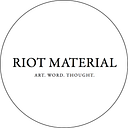Hilma af Klint: Paintings for the Futur
at The Guggenheim Museum, NYC (through April 23, 2019)
Reviewed by Nancy Kay Turner
The Hilma af Klint retrospective, currently at The Guggenheim Museum, is a game changer. This astonishing exhibition alters the way one must view the trajectory of abstract painting (almost always male dominated) in the early twentieth century. The mystery of how a classically trained female painter in Sweden at the turn of the century moved confidently away from realism to large-scale abstraction before any other painters did (and kept it secret) is a fascinating tale.
In the late nineteenth century there was a burgeoning interest in spiritualism, fueled by both the Rudolph Steiner’s Theosophy and Helena Blavasky’s Anthroposophy movements. Each of these was esoteric and believed in the accessibility of the spirit world as one of its shared components. At the same time that looking inward towards the unseen was becoming fashionable, there were also life changing scientific discoveries being published — such as the discovery of the x-ray (being able to actually see inside the body), Darwin’s theory of evolution and scientific interest in time and the fourth dimension, to name a few. This was a heady time of intellectual, scientific and spiritual inquiry, as well as seismic social change.
In 1896, Klint and four friends started having séances in which they channeled five entities who entreated them to create automatic drawings (a technique that the Dadaists and Surrealists would use later on to access the subconscious). The group of women called themselves The Five (De Fem), and their entities or guides were called High Masters (De Hoga). The group was instructed to keep journals and to “Protect your drawings. They are pictures of drenching waves of ether which await you one day when your ears and eyes can comprehend a higher summons.” From 1896–1903, Cornelia Cederberg, one of the members, did all the drawings. However, suddenly, in 1904 Klint was told by the spirits to take over and to create paintings not drawings. From 1906–1915, Klint created 193 works, many of them enormous paintings, for a future temple. She kept meticulous notebooks, which documented all thoughts, sketches, investigations and instructions. The ten largest paintings (all around 322 cm by 239 cm) were made in sixty days in 1907 (each took all of four days) with apparently no recorded preparatory drawings or designs, which is quite extraordinary.
Group IV, The Ten Largest, №1, Childhood, 1907, tempera on paper mounted on canvas, 322 x 239cm (127.65 x 94 in.) is characterized by circles, tangential ovals, orange hued curvilinear lines that mimic cursive writing, with hints of botanical flower shapes and textures, all against a deep blue background. The space is very shallow, almost flat, with only one area of white floral shapes overlapping another series of rose bud-like configurations. The work, most probably, was partially painted on the floor (way before Pollack) as footprints are slightly visible but the occasional drips reveal that it was also painted vertically.
There are two paintings representing childhood, two for youth, four for adulthood and two for old age. The progression is subtle with the lexicon of shapes, lines and colors evolving slowly and delicately. Spiral lines within shapes appear first in №3 Youth of this series. The background shifts as each stage progresses from a slightly grayed blue, to a medium burnt orange, to a delicate more scumbled mauve, to a pinkish sienna and finally (in Old Age) to a neutral beige. By (№10 Old Age) a grid has appeared and the circular forms are more complicated towards the top and paradoxically, simpler near the bottom (this is poignant as one thinks about heading towards death and the extinction of all sensation and thought). While it is the non-objective imagery that is revolutionary, it is the ambitious scale that makes it so unique.
In 1908, Hilma af Klint contacted the revered Rudolph Steiner and invited him to critique her large-scale paintings that had been channeled through her. He visited her, but it was not a good studio visit. Steiner was dismissive of the mediumistic part of her process and encouraged her to use her own inner voices. Due to this and her mother’s illness, she stopped working on the paintings for the Temple for four years. It has been speculated that this negative interaction fueled her desire to keep these works absolutely private and for a future audience only. However, she continued to show her more acceptable figurative works and was in exhibitions in 1906, 1907, 1911, and 1914 (with Kandinsky). When Klint returned to the paintings for the Temple in 1912, she had eschewed the spirit entities altogether (seemingly taking Steiner’s suggestions to heart) and took complete ownership of all of the next bodies of work.
To read the rest of Turner’s review, go to Riot Material magazine: https://www.riotmaterial.com/hilma-af-klint-paintings-for-the-future/
And please follow us on Facebook: https://www.facebook.com/riotmaterial/
